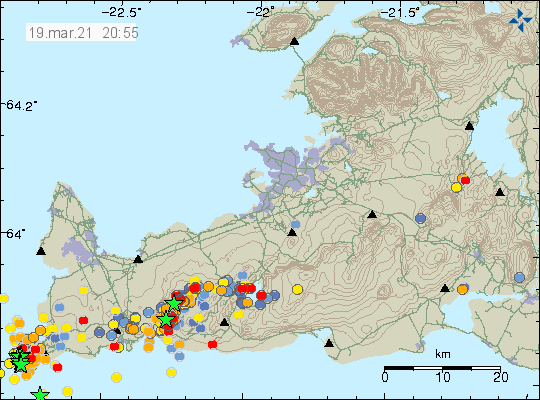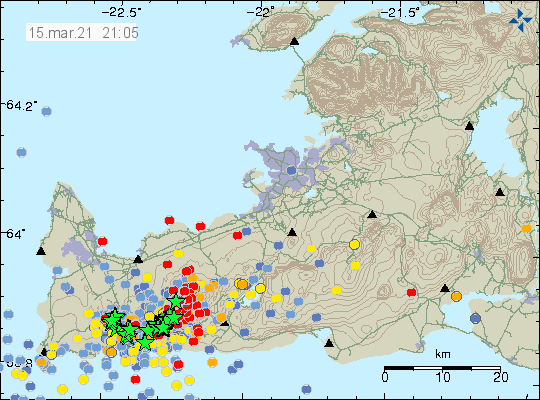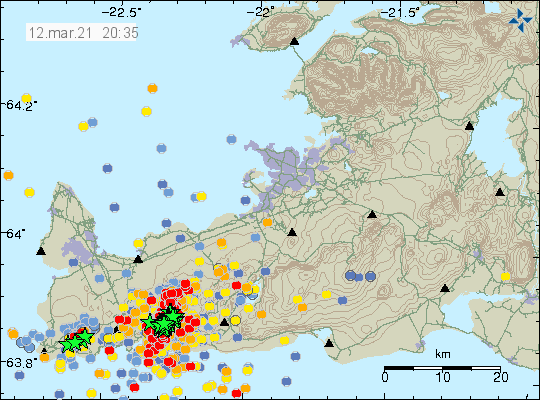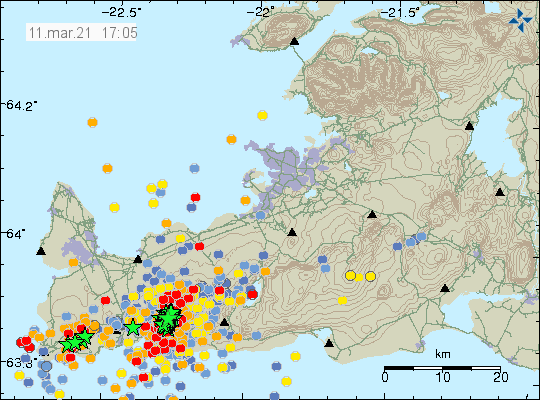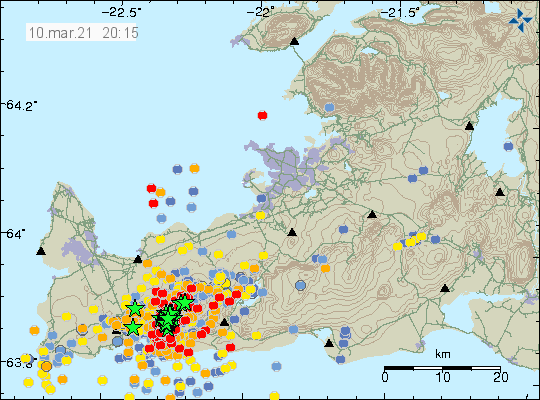This is a short article about the eruption in Geldingadalur. The volcano that is erupting continues to be Krýsuvík-Trölladyngja volcano system. This might change at later date. This article is written on 22-March-2021 at 17:30 UTC.
- The eruption is now mostly just in one crater. There is some activity in two other craters but it seems to be getting smaller as the eruption goes on.
- This eruption is tiny and one of the smallest eruption observed in Iceland.
- There is risk of new eruption opening up once this eruption ends or starts to get close to ending.
- There is a fissure in the ground on the right side of the main crater (as seen on the web camera). A lot of volcanic gas comes from that fissure but no eruption has taken place so far.
- There has not been any noticeable deflation according to GPS data from today (22-March-2021).
- The main crater is now estimated to be 30 meters high but it is unstable and collapses often.
- The lava is estimated going to fill Geldingadalur valley in 10 to 14 days if the eruption continues this long.
- Earthquake activity has almost stopped on Reykjanes peninsula after the eruption started. Once the eruption stops earthquake activity might increase again.
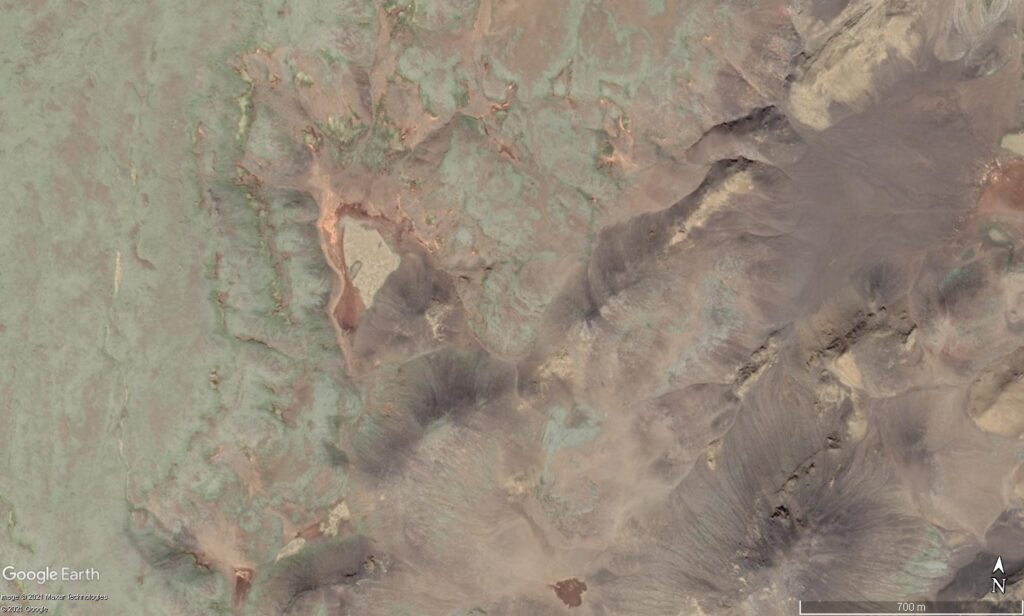
The last eruption period on Reykjanes peninsula lasted from the ~700 to the year ~1400. It can be estimated that current eruption period that has now started on Reykjanes peninsula is going to last until the year ~2400 to the year ~2600. During this time shortest time between eruptions is 1 year but the longest time between eruptions might be up to 10 years. How this going to be exactly is a big question but this estimate of mine is based on the limited historical data that I have read somewhere (I no longer remember where that was).
News items with videos
Tower breaks again, lava gushes forth (Rúv.is)
Web cameras now with English text
Live feed from Iceland volcano (Rúv.is)
Live from Geldingadalir volcano, Iceland (YouTube)
Rúv has moved the stream to YouTube only.
Beint: Eldgosið í Fagradalsfjalli (mbl.is, this camera is on the other side compared to the Rúv camera)
Update at 23:57 UTC
According to the evening news on Rúv the lava and magma that is now flowing into the valley of Geldingadalur is around 1200C and is a primitive magma of Tholeiitic magma series (Wikipedia). The source of this eruption is a magma chamber with the depths of 17 km to 20 km and the origins of the magma it self is far deeper into the hotspot below Iceland. This magma has a lot of CO and CO2 gases that are highly dangerous. There is also a lot of SO2 gas in the eruption and that is dangerous gas.
News in Icelandic about this
Hraunkvikan sýnir beintengingu við miðju möttulsins
Rate of updates
Since the eruption is now in stable activity I am going to limit update to if anything major happens. Next update about the eruption should be on Friday 26-March-2021. Other activity in Iceland is going to be reported as normal if anything happens.
Donation
Please remember to support my work with donations. Google Adsense remains limited on my website and I don’t know when it might get back to normal. Thanks for the support. 🙂
Article updated at 18:32 UTC. New web camera added.
Article updated at 20:50 UTC. Web camera information updated.
Article updated at 23:57 UTC. Information added about the eruption.


